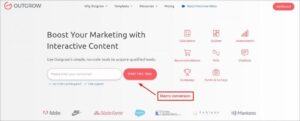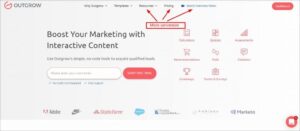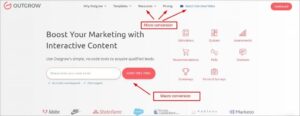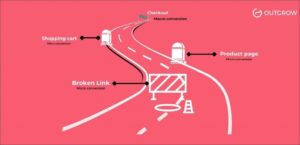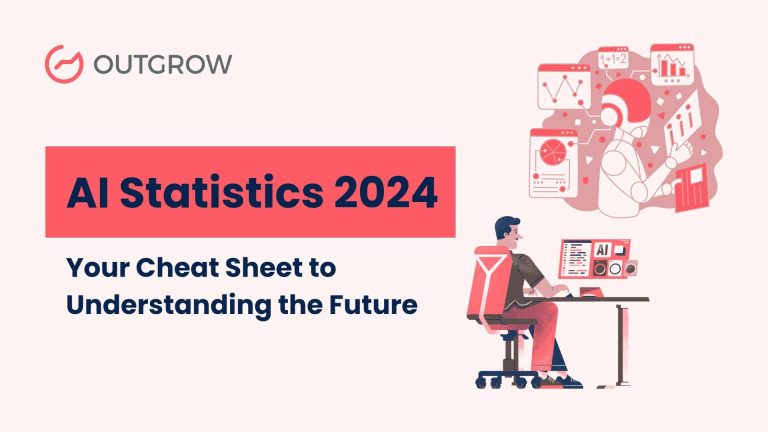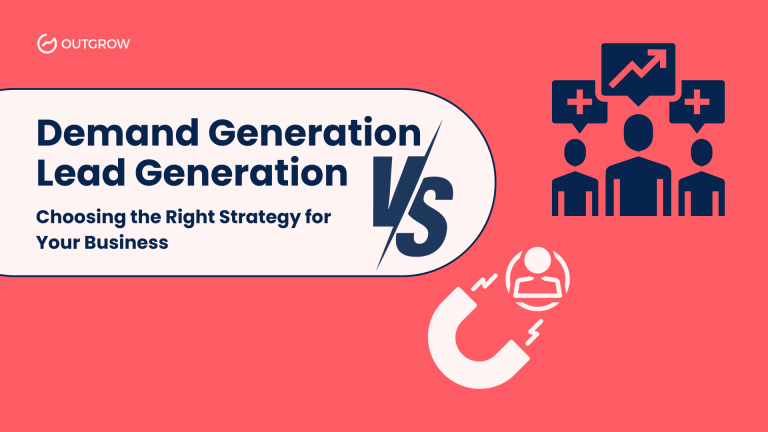Macro and Micro Conversion – The Milestones on the CRO Roadmap
Table of Contents
The success of a conversion rate optimization (CRO) strategy depends on how well you define, track and analyze your key performance indicators (KPI). And, the KPIs for a CRO campaign is broadly divided into two categories – micro conversions and macro conversions.
So without further ado, let’s dig into the ins and outs of micro and macro conversions.
What Is Macro Conversion?
When a user takes an action that meets the primary goals of your website, we call it a macro conversion (also known as primary conversion).
Example: If you run a SaaS company, then a product purchase or free trial signup can be a macro conversion for you.
What Is Micro Conversion?
Micro conversions are the smaller steps users take on your website that paves the way for a macro conversion.
Example: email clicks, blog subscription, quiz participation, newsletter signup, video play, visit the pricing page, etc. These micro conversion factors can get your prospects one step closer to signing up or purchasing (macro conversion).
Must Read: A Five-Step Guide to Conversion Rate Optimization Process
Identifying Macro and Micro Conversions
To understand macro and micro conversions better, you need to understand the roadmap that users follow while making an online purchase. And it looks something like this:
- Visit the eCommerce website
- Navigate to the category pages (eg. mobiles, apparel, footwear)
- View sub-category pages (eg. mobile brand, price range)
- Open a specific product page (eg. iPhones)
- Click ‘Add to Cart’
- Add or decline ‘frequently bought together item recommendations (eg. screen guard, back cover)
- Proceed to checkout
- Enter the delivery address
- Select preferred shipping options (eg. fast delivery, standard delivery)
- Enter your preferred payment method (eg. debit card, credit card)
- Place an order
So, in this case, steps 2-10 are micro conversions and step 11 is a macro conversion (or primary conversion). However, users may take other actions on the website in addition to steps 2 -10 or may bypass some of these steps before making the final purchase. In any case, there will be a series of granular steps (micro-conversions) that will ultimately lead to the end goal, i.e., purchasing a mobile phone (macro conversion).
Micro Conversion vs Macro Conversions
| Macro Conversion | Micro Conversion |
| The macro conversion metric is generally used to calculate the conversion rate of a website.Examples of Macro conversion:
1. Revenue conversions |
The micro conversions are generally tracked to understand user pain points along the road to a macro conversion.Examples of Micro conversion:
1. Navigation-related actions |
Role of Micro conversions in CRO
Micro-conversions are considered the milestones on the road to a successful CRO campaign. If we talk about the CRO roadmap, then a macro conversion is the ultimate destination and the micro conversions are the stepping stones that lead to the finish line.
Tracking micro conversions help you spot the loopholes in your sales funnel that is responsible for users dropping off before the final conversion. Not only that, but micro-conversions can also help you optimize your future interactions with the audience.
For example
If 6 out of 10 visitors abandon your shopping cart, then you might want to audit your cart page for possible causes of distraction, broken links, UX problems, etc. This is an example of how micro-conversion KPIs help you spot and fix the loopholes in your sales funnel.
Say again, you find that 6 out of 10 users have added a certain product to the cart but have not made the actual purchase. Since you fixed the possible issues in the first step, you run an audit on your cart page and find no possible causes of distraction or UX problems.
This means that your users might need a little push to move down the final stage. So, you can send them a push notification like, ‘We noticed that items are lying in your cart, so here’s an exclusive discount coupon for you (valid for 2 hours)’. Now, this is an example that shows how tracking micro-conversion metrics can help you optimize your future user interactions.
Fixing these problems in your sales funnel would generally help you increase your actual conversion. You can also add small elements to your cart page (eg. frequently/recently bought items) and track it as a micro-conversion. No matter what you do, the ultimate goal is to optimize your site for a better user experience and clear the road leading to the finish line.
Correlation Between Micro Conversions and Macro Conversions From a CRO Perspective
A huge chunk of traffic drops off before completing a purchase or signing up for a demo. Hence, they don’t add up to the actual conversion or the macro conversion. Having said that, this doesn’t mean the abandoned traffic is useless. To improve your conversion rate (macro conversions, basically) you must analyze and optimize your micro conversions. Here’s an example that will help you understand the correlation better.
This is an example of a regular eCommerce conversion funnel or a user’s journey. Generally, users start their journey on an eCommerce website from a landing page and end with a purchase.
| Pages reached | Landing Page | Category page | Product page | Shopping cart | Checkout |
| Number of visitors | 1000 | 900 | 800 | 300 | 100 |
| Micro conversion | 90% | 89% (approx) | 38% (approx) | 32% (approx) |
*This funnel is just for reference. The actual eCommerce funnel can have more subcategories.
The micro-conversions, in this case, are the navigations from the landing page to the category page, the product page, and finally to the shopping cart page. And, all the micro-conversions lead to the same primary goal or macro conversion – a checkout.
Now, if the company manages to optimize its product page and improve micro-conversions by 20%, here’s what it will look like:
| Pages reached | Landing Page | Category page | Product page | Shopping cart | Checkout |
| Number of visitors | 1000 | 900 | 800 | 464 | 149 |
| Micro conversion | 90% | 89% (approx) | 58% | 32% (approx) |
So, the number of checkouts or macro conversions for the company increased by 49% (100 to 149) due to a 20% change in a micro-conversion. This demonstrates the correlation between micro and macro conversions with reference to CRO.
Tools to Track Micro Conversions
Micro conversions can be tracked in several ways. And the easiest way to do this is with the help of a web analytics tool like Google Analytics. Additionally, you can use Google Tag Manager to facilitate more granular tracking.
Tracking Micro Conversions Using Google Analytics
Google Analytics can help you track micro-conversion metrics through ‘Goals’.
In Google Analytics you can set up 4 different types of goals:
- Destination goal– when users visit a specific webpage
- Duration goal– when users spend a certain amount of time on a page
- Pages per session goal– when a user views a predefined number of pages in a given session
- Event goal– when a user takes a predefined action (eg. clicking on a button, video plays, etc.)
Steps to track micro conversion in Google Analytics using goals:
- Open Google Analytics.
- Choose your web property >> click ‘Admin’.
- Go to ‘view’ and click ‘goals’.
- Click ‘+New Goal’, select ‘custom’, and click ‘continue’.
- Add a goal name, click on the button next to ‘destination’ and click ‘continue’.
- Enter the URL of the page that you want to define as a goal.
- Add other micro-conversion metrics if you need them.
- Click Save.
Now, your setup is complete. So the next thing you need to do is analyze the data that you will be gathering. You can view your goals in Google Analytics under the ‘Conversions’ menu.
Tracking Micro Conversions Using Google Tag Manager and Google Analytics Together
In Google Tag Manager, micro conversions are tracked as ‘Events’.
Tracking micro conversions as events gives you a more granular view of your CRO process. You can track events like file downloads, button clicks, video play, etc. However, Google Tag Manager only helps you define the events that you want to track. To view and analyze the data, you need the help of Google Analytics.
Here’s a complete guide on how you can set up events to track micro conversions using Google Tag Manager. You can also use an embedded analytics solution to track conversions and create insights that drive improved results.
How to Improve Micro Conversions Using Interactive Content?
Well, so far we have been talking about the technical aspects of micro conversions. But, what can you do to improve your micro-conversion metrics? This is where interactive content comes in.
But first, what is interactive content?
Interactive content is a type of content that requires and encourages users to actively interact with the content piece rather than idly consuming it like static content. Quizzes, assessments, calculators, product recommendation quizzes, polls, etc. are a few examples of interactive content.
It is extremely attractive and of course, engaging because interactive content requires users to interact with it. Also, it is highly flexible and customizable. So, you can leverage interactive content to improve your micro conversions.
Once you have analyzed your micro-conversions and figured out why your conversions are low, you can personalize your interactive content accordingly and place it at every touchpoint. Also, try to address the pain points of your customers or add value to their shopping experience. Eventually, you will see an increase in your micro metrics.
Must Read: Boost Audience Engagement With These 21 Types of Interactive Content
And as we have already discussed the correlation between micro and macro conversions, you know that an increase in micro-conversions will ultimately increase the macro conversion rate.
So, how can you use interactive content to increase your micro conversions?
Here’s an example:
Suppose you are in the eCommerce tourism business and you find out that users are dropping off from your destination listing page. Maybe, your users are having a problem in making a choice! Overwhelmed by the exotic pictures of different locations on your listing page, they are unable to decide which one to go for.
In this case, you can create a product recommendation tool and embed it on your listing page. The tool will recommend to your users which location to go for based on their choice of input. As a result, it improves your conversions. And guess what? – It will fetch you the lead details and their preferences for free!
Micro Conversion Case Study
Get Paid for Your Pad (GPYP), used an interactive assessment built on Outgrow to increase their micro-conversions (lead generation). Previously they had a static lead form that was unable to deliver a comprehensive conversion rate.
However, after introducing the new interactive assessment, they managed to achieve a stellar 40% micro conversion rate.
Conclusion
Tracking, analyzing, and optimizing micro conversions is quintessential to a successful CRO campaign. The more you optimize the better. It also helps you improve the overall UX of your website.
And before we bid adieu, here’s a small gift for you. Go ahead and create interactive content like product recommendations, quizzes, calculators, chatbots, etc. and improve your micro conversions for free!



